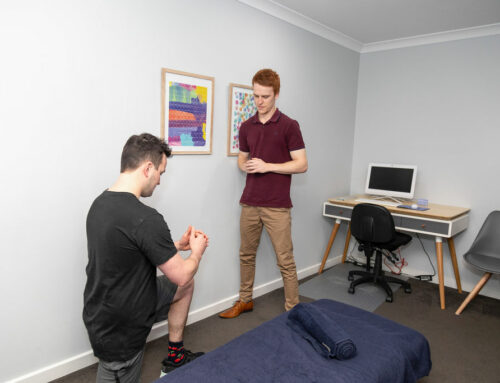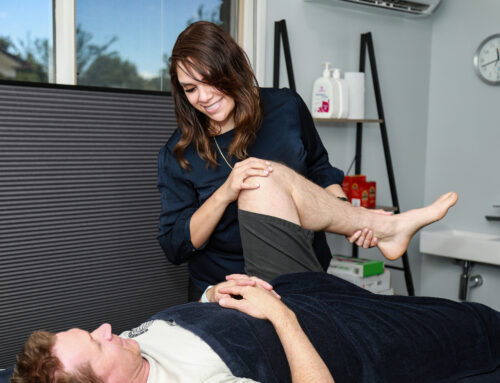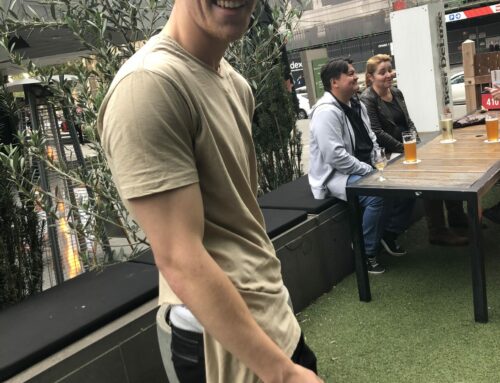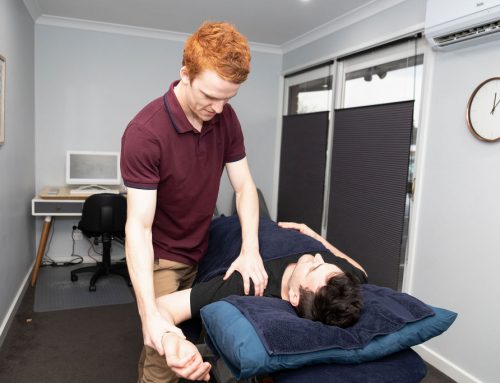The name is slightly misleading, as this often painful condition is not limited to the Tiger Woods’ of the world. Golfers elbow or medial epicondylitis is a condition affecting the inner side of your elbow. It can occur for a number of reasons. The common theme being overuse or repetitive strain of the flexors of the forearm.
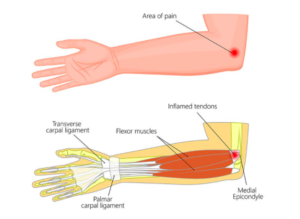
Image courtesy of: https://www.lmh.org/
ANATOMY OF THE ELBOW
To understand how golfers elbow develops, knowing a little anatomy can go a long way. As you can see in this image, most of the forearm flexors attach to a common site. This part of the humerus is known as the medial epicondyle (also referred to as the common flexor origin or CFO) via a tendon. It’s often this tendon that is the source of pain for people with golfers elbow. And its created by a repetitive strain of the flexor muscles that pulls on the tendon. This may result in inflammation and pain.
It usually occurs between the ages of 40 and 60, and is much less common than tennis elbow. Women and men are equally likely to get it.
COMMON CAUSES OF GOLFERS ELBOW
- Golf (no surprises there!)
- Racket sports (tennis, badminton, squash etc.)
- Throwing sports (baseball, cricket, softball, football)
- Improper form during exercise (e.g. weight training)
- Occupations that require repetitive and forceful gripping (construction, plumbing, gardening etc.)
- Poor work ergonomics, especially when working at a desk
SYMPTOMS OF GOLFERS ELBOW
- Pain/tenderness on the inner side of your elbow and forearm. This pain may radiate down towards your wrist
- Pain when gripping or performing day-to-day tasks
- Pain when throwing/swinging a golf club or racket
- Less commonly, people can report numbness or tingling in the hand/fingers
CAN OSTEOPATHY HELP GOLFERS ELBOW?
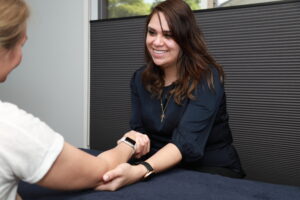 Osteopaths are well versed in conditions that affect the elbow. We conduct a thorough assessment to not only identify the source of your pain, but also any areas that may have contributed to your injury. This may include the wrist, shoulder or neck.
Osteopaths are well versed in conditions that affect the elbow. We conduct a thorough assessment to not only identify the source of your pain, but also any areas that may have contributed to your injury. This may include the wrist, shoulder or neck.
Along with techniques such as dry needling, massage, manipulation, articulation and radial shockwave therapy we will often incorporate a home-based rehabilitation program to strengthen the muscles of the forearm and any other weaknesses identified during your examination.
Pain is a complex experience, and it’s important to remember that tissue healing continues to take place even after your pain has dissipated. This is why us osteopaths encourage you to continue to stay committed to your management plan and the exercises we prescribe.
If you have any questions or you’re looking to book an appointment, don’t hesitate to give our friendly reception team a call on 5941 4157 or email me at darren@pakenhamosteopathy.com.au.

